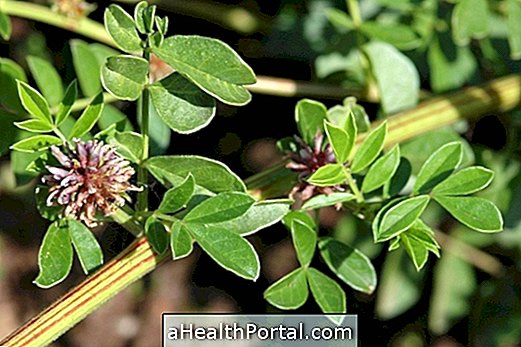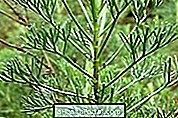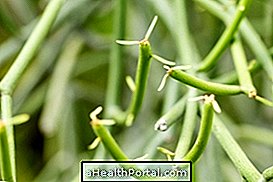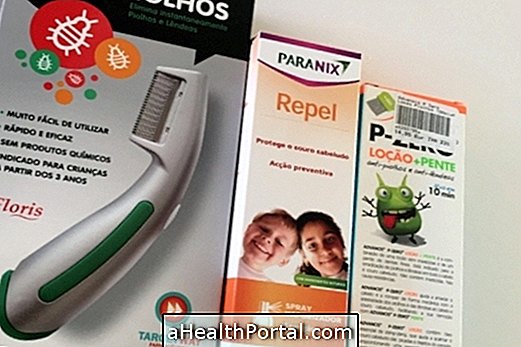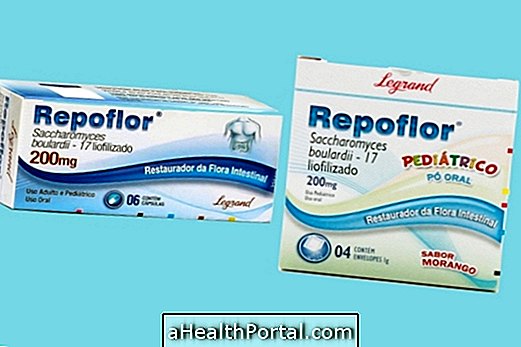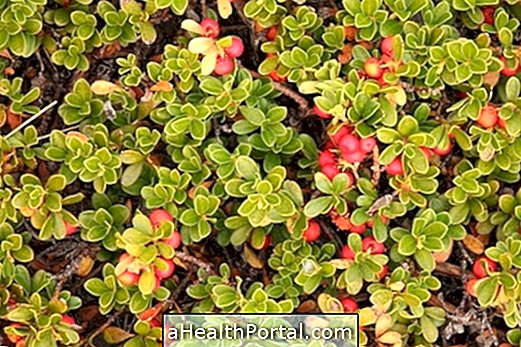Pomegranate is a fruit widely used as a medicinal plant, and its active and functional ingredient is ellagic acid, which acts as a powerful antioxidant associated with Alzheimer's prevention, reducing pressure and as an anti-inflammatory to decrease sore throat for example. Pomegranate is sweet fruit that can be consumed fresh or used to make juices, teas, salads and yogurts, also helping in diets for weight loss.
Its scientific name is Punica granatum, and its main properties for health are:
- Prevent cancer, especially prostate and breast, by containing ellagic acid, a substance that prevents the uncontrolled proliferation of tumor cells;
- Prevent Alzheimer's, especially the bark extract, which has more antioxidants than the pulp;
- Prevent anemia, because it is rich in iron;
- Combats diarrhea, being rich in tannins, compounds that increase the absorption of water in the intestine;
- Improve the health of the skin, nails and hair, by being rich in vitamin C, vitamin A and ellagic acid, which are powerful antioxidants;
- Prevent heart disease by having high anti-inflammatory action;
- Prevent cavities, canker sores and gingivitis, by having antibacterial action in the mouth;
- Strengthen the immune system by containing zinc, magnesium and vitamin C, which also helps fight urinary tract infections;
- Reduce blood pressure by promoting relaxation of blood vessels;
- Prevent and improve throat infections .
To get the benefits of pomegranate, you can consume both fresh fruit and juice, and it is also very important to consume the tea made from its bark, which is the part of the fruit richer in antioxidants.

How to Make Pomegranate Tea
The parts that can be used of the pomegranate are its fruit, its bark, its leaves and its flowers to make teas, infusions and juices.
- Pomegranate tea: Put 10 grams of the peel in 1 cup of boiling water, turning off the heat and smothering the pan for 10 minutes. After this period, warm tea should be peeled and drunk, repeating the process 2 to 3 times a day.
In addition to tea, one can also use pomegranate juice, which is done by just pounding in the blender 1 pomegranate with 1 cup of water, then drinking, preferably without adding sugar. See also how to use pomegranate for weight loss.

Nutritional information
The following table shows the nutritional information for 100 g of fresh pomegranate:
| Nutrients | 100 g of pomegranate |
| Energy | 50 calories |
| Water | 83.3 g |
| Protein | 0.4 g |
| Fat | 0.4 g |
| Carbohydrates | 12 g |
| Fibers | 3.4 g |
| Vitamin A | 6 mcg |
| Folic acid | 10 mcg |
| Potassium | 240 mg |
| Phosphor | 14 mg |
It is important to remember that, although it brings several health benefits, the use of pomegranate should not replace medications or other medical treatments.
Green Salad Recipe with Pomegranate
Ingredients:
- 1 packet of arugula
- 1 bunch of lettuce frise
- 1 pomegranate
- 1 green apple
- 1 lemon
Method of preparation:
Wash and dry the leaves, and then tear them roughly. Cut the apple into thin strips and soak in water with lemon for 15 minutes. Remove the seeds from the pomegranates and mix them with the green leaves and the apple into strips. Serve with vinaigrette or balsamic vinegar sauce.
Side effects of overconsumption
The consumption of pomegranate in large quantities can cause problems like nausea and vomiting due to its high content of alkaloids, which can make it toxic. However when infusions are made there is no such danger because the alkaloids are added to other substances called tannins, which are extracted in tea and that take away the toxicity of the pomegranate.

